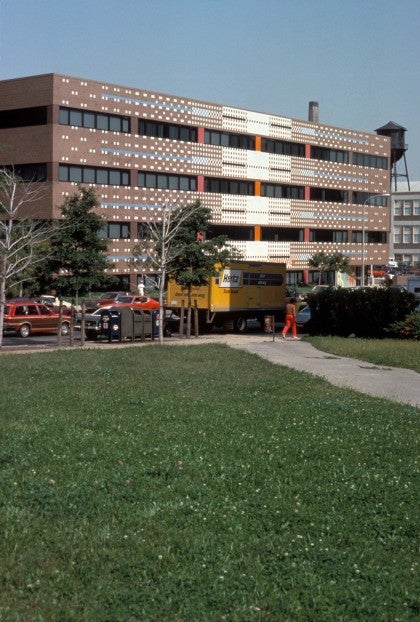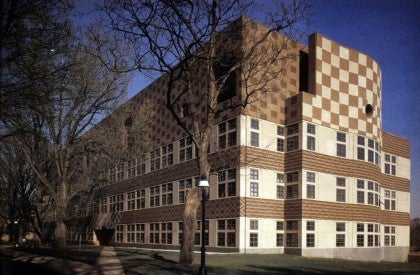| Sorted by date | |||
|
|||
|
|
|||
page153from Building Ideas
6 Michael Graves – Humana Building,
Louisville, Kentucky, 1982-86. (Jonathan Hale)
7 Michael Graves – Humana Building,
Louisville, Kentucky, 1982-86. (Jonathan Hale)
on associational readings, where both
figurative and anthropomorphic references are of major significance.
  ... more ... ... more ...
|
|||
|
|||
|
|
|||
page152from Building Ideas
making great play of the fact that it is
merely trying to refer to something else.
The
problem with this reduction of architecture to decoration is that people still
have to inhabit the internal spaces of the “shed”. Another architect who has
also tried to make sense of this dilemma, and who shares the concern with
history expressed by Venturi, is fellow American Michael Graves. Graves became
known in the 1970s as one of the famous New York Five, after the book Five
Architects published in 1972. At this stage, paradoxically, his work showed
pronounced “syntactic” tendencies, being for the most part of revival of... more ...
|
|||
|
|||
|
|
|||
page151from Building Ideas
5 Venturi, Rauch and Scott-Brown –
Institute for Scientific Information, Philadelphia, 1978-79.(Alistair Gardner)
 ... more ... ... more ...
|
|||
|
|||
|
|
|||
page150from Building Ideas
4 Robert Venturi and Denise Scott Brown –
Research laboratories, Princeton University, 1986. (Alistair Gardner)
 ... more ... ... more ...
|
|||
|
|||
|
|
 ... ...
... ... ... ...
... ... ... ...
... ... ... ...
... ... ... ...
... ... ... ...
... ... ... ...
... ... ... ...
... ... ... ...
... ... ... ...
... ... ... ...
... ... ... ...
... ... ... ...
... ... ... ...
... ... ... ...
... ...